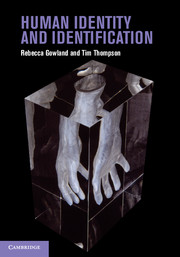3 - The skin
Published online by Cambridge University Press: 05 February 2013
Summary
There should be more than this flimsy dermal bubble separating the vastness of the cosmos from the throb of blood and consciousness that is you.
(Jones, 2007)The skin, or integumentary system, is perhaps the most significant region of the body in terms of human identity and identification. In physiological terms, its role is significant since it forms the physical barrier or border between our internal organs and the outside world. In social terms, ‘the skin gives us both the shape of the world and our shape in it’ (Connor, 2004: 36). It provides a vital conduit between these worlds via the sense of touch, providing the body with a constant stream of information concerning our immediate environment and stimulation, including pleasure and pain. The skin is responsive to emotional stimuli (Picardi & Pasquini, 2007; Morrison et al., 2010). Touch is the first of our senses to develop and skin-to-skin contact between baby and mother is thought to be critical, not only for intimacy and bonding, but also for neuropsychological development (Weiss, 2005). As Benthien discusses, a newborn baby laid against the skin of her mother does not yet know that she is a separate being. Gradually she learns where her boundaries are through tactile experiences intimately tied to her emotional sense of well-being (2002).
The skin should not be viewed as a solid boundary, since it is permeable and allows the interchange of substances between the body and its environment (Connor, 2004). The skin simultaneously communicates multiple facets of identity, on both a ‘biological’ and cultural level (e.g. ancestry, age, gender, health and external modifications). It is malleable and plastic, changing throughout the life course from birth to old age and in response to environmental and cultural stimuli. Comprising approximately 16 per cent of body weight (Gawkrodger, 2002), the skin appears as the most external and exposed anatomical region and, as such, it is the skin that others first notice and make judgements based upon.
- Type
- Chapter
- Information
- Human Identity and Identification , pp. 37 - 70Publisher: Cambridge University PressPrint publication year: 2013



